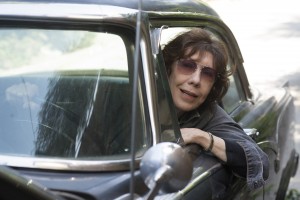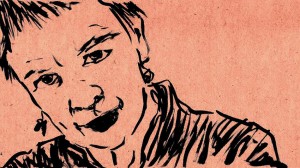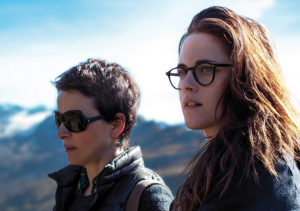 Although cinema has always mined literature to happy effect, 2015 was an unusually good year for adaptations; “The Revenant,” “The Big Short,” “Room,” “Diary of a Teenage Girl,” “Beasts of No Nation,” “The Martian,” “Chi-Raq,” “Far From the Madding Crowd,” and “Carol” are just a few examples. But what’s really striking is how many 2015 films crafted from original screenplays would make great books. It may sound nutty, but only a few decades ago there was a bona-fide industry based on the “novelization” of movies. Remember? That was Diane Keaton’s money gig when she played the Van Gogh-mispronouncing critic in Woody Allen’s “Manhattan” (1979).
Although cinema has always mined literature to happy effect, 2015 was an unusually good year for adaptations; “The Revenant,” “The Big Short,” “Room,” “Diary of a Teenage Girl,” “Beasts of No Nation,” “The Martian,” “Chi-Raq,” “Far From the Madding Crowd,” and “Carol” are just a few examples. But what’s really striking is how many 2015 films crafted from original screenplays would make great books. It may sound nutty, but only a few decades ago there was a bona-fide industry based on the “novelization” of movies. Remember? That was Diane Keaton’s money gig when she played the Van Gogh-mispronouncing critic in Woody Allen’s “Manhattan” (1979).
Here are four recent films that deserve a novelization.
 “Grandma” (2015)
“Grandma” (2015)
Writer/director Paul Weitz’s dry-eyed indie starring Lily Tomlin as a cantankerous lesbian feminist trying to hunt down the cash to pay for her granddaughter’s abortion garnered a lot of buzz on the festival circuit but never got its props in general distribution – maybe because nobody knew what to do with a grumpy old lady rather than a grumpy old man, or maybe because it lacked a soft and gooey center, which moviegoers seem to expect of stories about elders. Both alleged failings would make this a coolly clever novella about women’s liberation and family ties. Although she’s been dormant for decades, Bastard Out of Carolina author Dorothy Allison could do wonders with this material; she’s always been great at examining the intersection of socioeconomics and queerness. Or why not bring in poet/novelist Eileen Myles? Through her collaboration off and on camera with “Transparent” show runner Jill Soloway, the searingly understated Chelsea Girls author is already enjoying a renaissance.
 “Heart of a Dog” (2015)
“Heart of a Dog” (2015)
In a way, performance artist Laurie Anderson’s documentary about the death of her finger-painting, keyboard-playing, blind rat terrier, Lolabelle, already feels like a book adaptation. Like a poem written on our own arm, it is an elliptical narrative that offers brilliant insights into loss and love, with very literary interrogations of the utility of Buddhism and art when we’re faced with the mortality of our favorite people. Really, it would be a hop, skip, and a jump to transform this fur-swaddled remembrance featuring Anderson’s own illustrations and watercolors into a graphic novel. And who better to write it than Anderson herself? A former art critic, she’d craft one that would change the medium as much as her albums have changed avant-garde rock.
 “Creed” (2015)
“Creed” (2015)
It may sound far-fetched, but this latest “Rocky” movie could make a Great American Novel – one that sprawls across generations and pokes into all corners of the American diaspora. Think about it. Before “Fruitvale Station” director Ryan Coogler approached Sylvester Stallone about reviving the latter man’s movie franchise, nobody thought another “Rocky” movie was advisable, either. Yet this Michael B. Jordan vehicle about the orphaned, illegitimate son of Balboa friend and foe Apollo Creed tackles issues of privilege, poverty, race, and athletics on a high level without ever sacrificing the crowd-rousing formula that first put the “Italian Stallion” on the map. The trick would be to find an author whose heart is as big as her brain. Though it may sound equally far-fetched, novelist and essayist Zadie Smith would be ideal. In White Teeth, the award-winning British author delivered the exact sort of cross-cultural, multihued wallop that this project would require, and she’s never been one to turn up her nose at pop culture.
 “Clouds of Sils Maria” (2014)
“Clouds of Sils Maria” (2014)
Though it has been largely overlooked on the awards circuit, writer/director Olivier Assayas’s Swiss Alp-set meta-meditation about an actress (Juliette Binoche), her assistant (Kristen Stewart, in the slyest of casting), her age, and her ambition was one of 2015’s best films. It also was one of its most emotionally sophisticated and the one that most easily passed the Bechdel Test. I think “Clouds” could make a swoony, smart novel about something chewier than female competition though it would, of course, cover some of the same ground. The best bet would be to raise French feminist author Marguerite Duras from her grave. Short of that, pulling Los Angeles essayist and novelist Eve Babitz out of her retirement might do the trick. In her 1970s and ‘80s profiles of fine art, rock stars, and new and old Hollywood, Babitz revealed an unparalleled understanding of how fame, femininity, and fortune worked. She’d likely find elements in Assayas’s study of female mirroring that even he did not imagine.
This was originally published at Signature.
